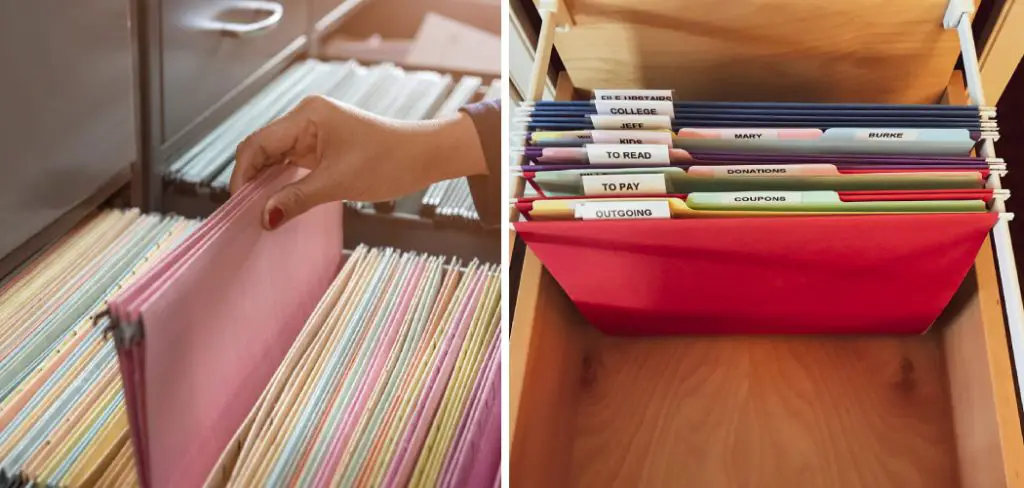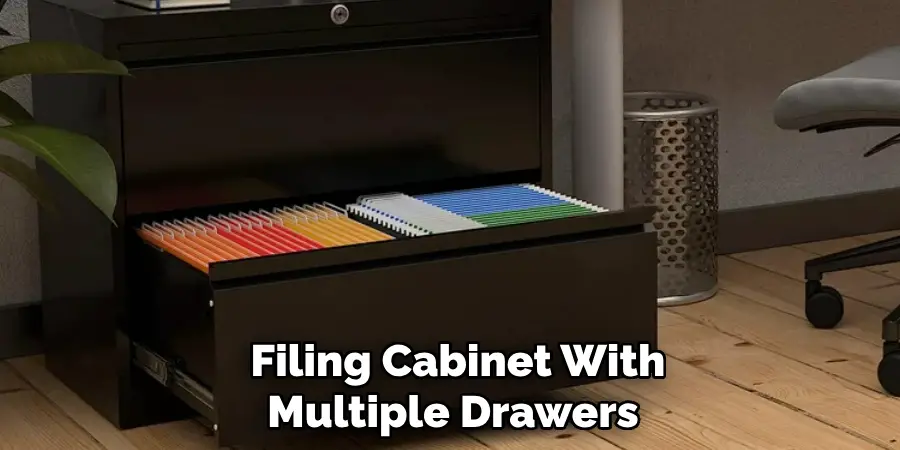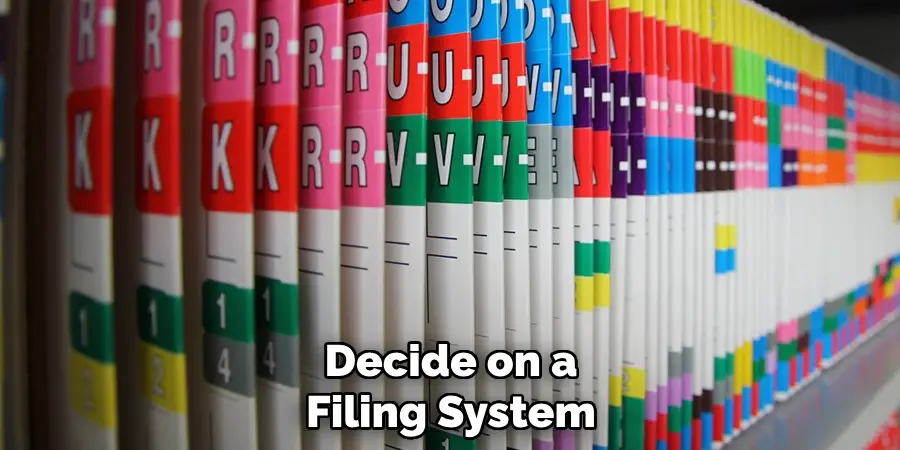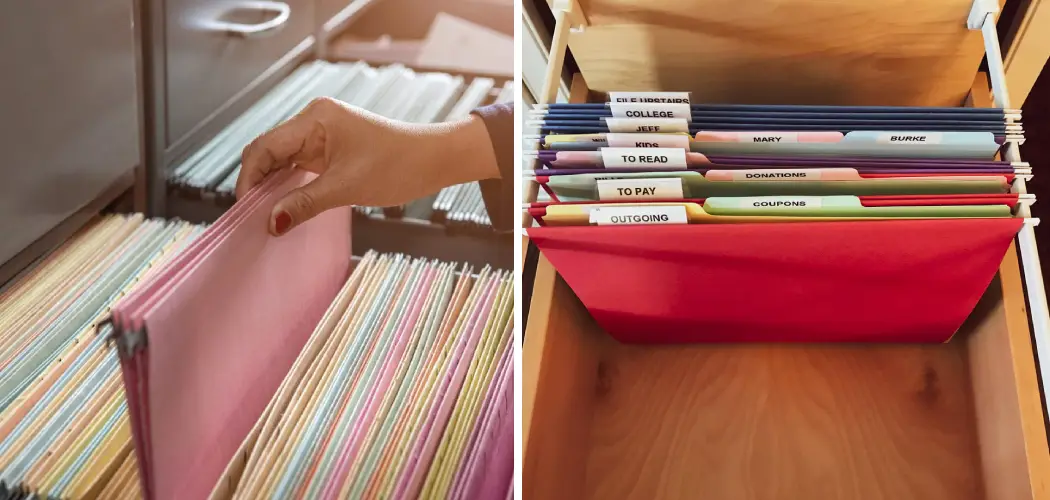In our increasingly digital age, the importance of maintaining a well-organized physical filing system can often be overlooked. Yet, the humble file cabinet remains an invaluable asset for businesses and individuals seeking efficient document management.

Whether it’s in a bustling office or a home study, knowing how to effectively organize a file cabinet can greatly enhance productivity, save time, and reduce stress associated with searching for important papers.
From financial records and contracts to personal documents like medical records and insurance policies, a properly arranged file cabinet can be the key to quick and hassle-free information retrieval. In this article, we delve into essential strategies and tips for how to organize a file cabinet, exploring categorization techniques, labeling methods, color-coded systems, and the art of decluttering.
Whether you’re a seasoned organizational enthusiast or just starting to tackle the paper clutter, these insights will empower you to master the art of file cabinet organization and regain control over your physical documents.
Importance of an Organized File Cabinet
Organizing a file cabinet is essential in order to keep your documents orderly and easy to find. Not only will it help you stay organized, but it will also make your life easier when the time comes to look for something specific.
It’s important to come up with an organizational system that works best for you so that all of your documents are easily accessible and can be found quickly. Although it may seem like a daunting task, organizing your file cabinet doesn’t have to be complicated. Here are some tips for getting started.
First, decide on the types of files you want to keep in your file cabinet. Common categories include tax records, bills and invoices, medical documents, employment paperwork, insurance information and financial statements. Sort your documents into each of these categories, and then organize them further by sub-categories.
For example, you may want to create a section for each year’s taxes or divide medical records into different subsections for each member of your family.
Next, consider investing in file folders to help keep everything even more organized. If you have the space, invest in a filing cabinet with multiple drawers. This will make it easier to store all of your documents in an orderly fashion. If a filing cabinet isn’t an option, you can get creative and use labeled boxes or baskets instead.

Identifying Clutter and Outdated Documents
Organizing a file cabinet can be an overwhelming task, especially when you are surrounded by years of paperwork. Start by evaluating the contents and determining which documents need to remain in your filing system and which could be eliminated or archived.
Some documents may only need to be stored for a limited amount of time or follow legal guidelines (such as tax returns) while others may be outdated or no longer necessary.
To help identify documents that are no longer needed, ask yourself the following questions:
- Have I used this document in the past year?
- Does this document contain sensitive or confidential information?
- Is this an original copy of a document or does it have a digital version available?
- Does any other family member need access to this document?
If you are no longer using a document or do not have an answer to the above questions, it may be time to discard or archive those files. Once you have identified the documents that can be eliminated from your filing system, take the necessary steps to securely dispose of them.
10 Steps How to Organize a File Cabinet
Step 1: Assess Your Needs and Priorities
Before diving into the physical organization process, take some time to assess your needs and priorities. Identify the types of documents you frequently access and those that require long-term storage.
Consider creating categories based on the nature of the documents, such as financial records, contracts, personal documents, and reference materials. This initial step will lay the foundation for an efficient and tailored organization system.
Step 2: Gather Supplies
Gather all the necessary supplies before starting the organization process. You’ll need hanging file folders, manila folders, labels, a label maker or markers, dividers, and a file cabinet. Having all these items at hand will prevent interruptions and keep the momentum going during the organization process.
Step 3: Declutter
Before organizing, decluttering is essential. Sort through all the documents in your file cabinet, purging those that are no longer relevant or needed. Dispose of outdated materials and duplicates to create more space for essential documents. Be sure to shred any sensitive information that you’re discarding.

Step 4: Create a Categorization System
Now that you have a clear idea of your document categories, establish a categorization system. Create main categories that align with your needs, and then further subdivide them into specific subcategories.
For instance, under “Financial Records,” you might have subcategories like “Bank Statements,” “Tax Documents,” and “Invoices.” This hierarchical system ensures that you can quickly locate documents when needed.
Step 5: Color-Coded Filing System
Implementing a color-coded filing system can greatly enhance organization and retrieval speed. Assign a specific color to each main category and use matching colored hanging file folders and labels. This visual cue makes it easier to identify categories at a glance, reducing the time spent searching.
Step 6: Establish Naming Conventions
Consistency in labeling is key to maintaining an organized file cabinet. Establish clear naming conventions for both hanging file folders and individual manila folders. Use concise and descriptive labels that accurately reflect the contents of each folder. This practice prevents confusion and ensures that anyone accessing the file cabinet can understand the system.
Step 7: Sort and Group Documents
Start sorting your documents into the designated categories and subcategories. As you place documents in their respective folders, make sure to arrange them chronologically or alphabetically within each folder. Grouping documents in an orderly manner streamlines the retrieval process and prevents future disarray.
Step 8: Utilize Dividers
Insert dividers between different sections within the hanging file folders. Dividers further organize the content, making it easier to flip through documents and locate specific items within a category. You can label the dividers with subcategory names to provide additional guidance.

Step 9: Arrange for Accessibility
Consider the frequency of access when arranging documents within the file cabinet. Place frequently accessed folders toward the front for quick retrieval, while documents that are rarely needed can be placed in the back. You can also consider placing certain folders on separate shelves for easy access without having to rummage through other drawers.
Step 10: Reevaluate Periodically
As your filing needs change, periodically reassess and reorganize your file cabinet as necessary. Paring down contents helps keep the system efficient and prevents documents from getting lost or misplaced.
Furthermore, make sure to securely shred any sensitive documents that are no longer needed or have reached the end of their retention period. With these tips, you can keep your file cabinet organized and efficient for years to come.
Things to Consider When Organizing a File Cabinet
Organizing a file cabinet can seem like an intimidating task, but it doesn’t have to be. With the right organization strategy and supplies, you can easily get started – and even enjoy the process! Here are some tips on how to organize a file cabinet in no time.
First, decide which items should go into the file cabinet. It is important to keep all important documents, such as tax returns and bank statements, in one secure location. Any other papers that need to be kept for legal or business reasons should also be kept in the file cabinet.
Next, decide on a filing system. You can do this by sorting your items into categories and then labeling them with either folders or labels. It is important to use labels that are easy to read and simple to find. Once you have a filing system in place, you can begin filling the file cabinet with documents.

Finally, it is important to be consistent when organizing your file cabinet. This means taking some time every few months or so to go through the items and make sure everything is up-to-date and properly labeled. You should also make sure that your file cabinet is kept in a secure location and that the documents are not left out in the open where they could be stolen or damaged.
Conclusion
In conclusion, there are many simple steps you can take to ensure your file cabinet is kept in order. From color-coding labels to creating folders for important documents, organization is the key to making sure you know exactly where everything is located. This will save you time and energy so that you can devote that effort to other projects or even just more leisure activities.
So if you are looking for an efficient way of how to organize a file cabinet, look no further! Try out these methods and before long, you will have an organized system that works for you. Remember:
Its important not to get overwhelmed when tackling an organizing project–start small and make incremental progress so that the task doesn’t become too intimidating or unmanageable. Take your time and enjoy the process of conquering organization on your own terms!

